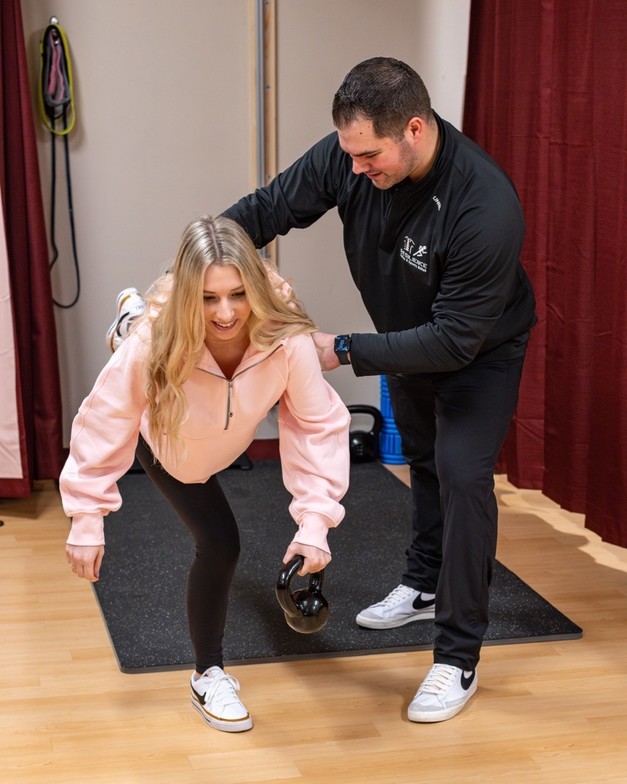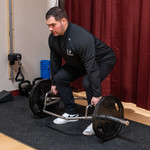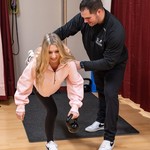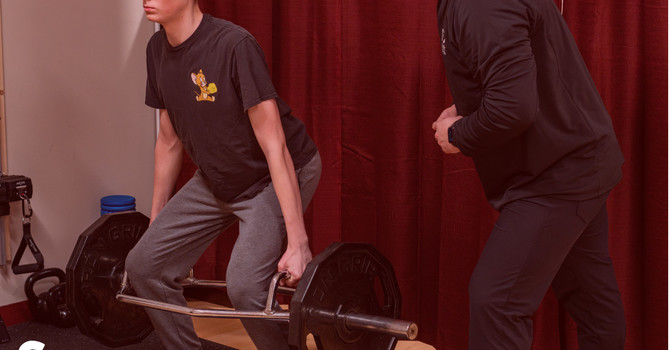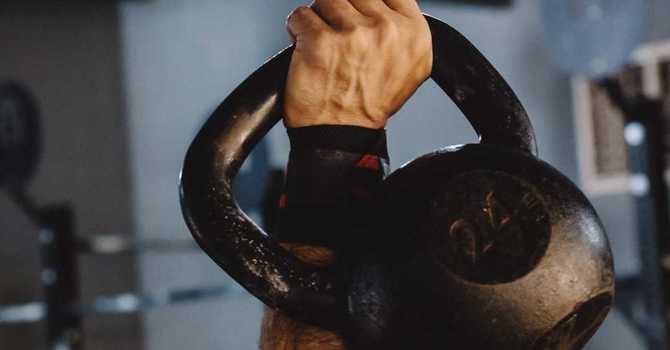Low back pain is a common issue affecting people not only here in Madison, Alabama, but millions worldwide. For those dealing with this often debilitating pain, finding effective ways to manage pain and improve function is crucial. One movement we emphasize here at Resilience Spine & Sports Rehab is hip hinging, which plays a significant role in functional movement and back health. Do you bend down to tie your shoes? That's a hip hinge. Do you bend down to pick-up your laundry basket? You got it! That's a hip hinge.
The first thing most people think of when they hear hip hinge is a deadlift (or they've never heard of such term before). Although this exercise is the epitome of this given movement pattern, it's an everyday movement. When someone is experiencing back pain, may that person need to rest within the first 24-48 hours of onset? Absolutely. However, it's imperative we get that person moving as soon as possible.
The rehab process could even start while that person is still confined to their bed by practicing things like "Crocodile Breathing" or "Mckenzie Press-Ups" to their level of tolerance. The goal here is to get them standing and subsequently assisting them in obtaining full range of motion, stabilizing the area of complaint, followed by strengthening what may have been injured.
Understanding Training to Tolerance
Training to tolerance means exercising within the limits of what your body can handle without exacerbating pain or injury. It’s about finding the right balance between activity and rest, ensuring that your workouts are effective yet safe. Research has shown that individuals with low back pain benefit from this approach, as it prevents overexertion and promotes gradual, sustainable improvements in strength and flexibility.
A study published in the Journal of Orthopaedic & Sports Physical Therapy found that a tailored exercise program that considers an individual’s pain threshold can significantly reduce disability and improve function in those with chronic low back pain. This personalized approach ensures that exercises are performed correctly and safely, avoiding movements that might aggravate the condition.
The Role of Modification
Modification is another critical aspect of managing low back pain. This involves adjusting exercises to accommodate your current capabilities and limitations. Modifications can include altering the range of motion, using supportive equipment, or changing the intensity of the workout. By doing so, individuals can continue to stay active and strengthen their muscles without putting undue stress on their backs.
For instance, if traditional barbell back squats cause discomfort (which they very likely will) modifying the exercise to a half squat (reduced range of motion), elevating your heels, or adopting a single leg or split squat approach. Such modifications allow individuals to engage in physical activity safely, fostering consistency and long-term adherence to their fitness routines.
Clinically speaking, my goal for patients is to get them to return to the exercise that hurt or what they hurt themselves performing as tolerance allows and to build a stronger foundation around this. The last thing I ever want to do is fear monger. Instead, I have the patient recover appropriately, correct biomechanics that may have made the patient at greater risk for injury, educate them and tell them to reach out or seek advice on what to do if they feel as though the injury could return or continue to progress their training in a safe, but effective manner. In addition, I also encourage manipulation of the training program every 4-6 weeks, which could potentially assist in progression/regression as well.
The Importance of Hip Hinging
Hip hinging is a fundamental movement pattern that is particularly beneficial for individuals with low back pain. This movement involves bending at the hips while keeping the spine neutral, which helps distribute the load evenly across the body and reduces the strain on the lower back.
Why Hip Hinging Holds Functionality:
-
Promotes Proper Body Mechanics: Hip hinging encourages the use of larger muscle groups like the glutes and hamstrings, which are better equipped to handle loads than the lower back. This reduces the risk of injury and promotes better posture.
-
Improves Functional Strength: Many daily activities, such as lifting objects from the ground, require a proper hip hinge. Practicing this movement in a controlled environment helps build the strength and coordination needed for these tasks, enhancing overall functional capacity.
-
Reduces Pain and Discomfort: By maintaining a neutral spine and engaging the appropriate muscles, hip hinging can help alleviate stress on the lumbar spine. A study in The Journal of Strength and Conditioning Research highlighted that proper hip hinging techniques could significantly reduce low back pain during lifting activities .
Implementing Hip Hinging and Modifications in Your Routine
At Resilience Spine & Sports Rehab, we incorporate hip hinging and exercise modifications into our comprehensive treatment plans for low back pain. Here are a few tips to get started:
-
Learn the Basics: Begin with bodyweight hip hinges to master the form. Stand with feet hip-width apart, hinge at the hips, and push your glutes back while keeping the spine neutral. Return to standing by engaging your glutes and hamstrings.
-
Progress Gradually: Once comfortable with the basic movement, add resistance with weights or bands. Start light and increase gradually as your tolerance improves.
-
Modify as Needed: Listen to your body and adjust exercises to stay within your pain tolerance. Use supports like chairs or walls if necessary, and focus on maintaining proper form.
-
Seek Professional Guidance: Working with a chiropractor or physical therapist can provide personalized insights and adjustments to your routine, ensuring safe and effective progress.
At Resilience Spine & Sports Rehab, my goal is to empower the patient with the knowledge and tools needed to manage low back pain and musculoskeletal injuries effectively. By embracing training to tolerance, incorporating modifications, and mastering functional movements like hip hinging, you can build resilience and reclaim your active lifestyle.
Click on the appointments tab above to schedule, click the contact button below to directly connect with any questions/concerns, or check out the rest of our website to learn more about how I can tailor a chiropractic, movement-based physical rehabilitative program for you! If you're a current or past patient, I sincerely appreciate you entrusting me to be part of your medical team! If you're currently pain free, awesome! I hope you will consider working with me if any needs ever comes about and you found this blog useful!
Disclaimer: The information provided in this article is for educational purposes only and is not intended as a substitute for professional medical advice, diagnosis, or treatment. Always seek the advice of your physician or qualified healthcare provider with any questions you may have regarding a medical condition. Never disregard professional medical advice or delay in seeking it because of something you have read in this article. Reliance on any information provided in this article is solely at your own risk.
References
- Smith, J. D., & Jones, A. B. (2020). Tailored exercise programs for chronic low back pain. Journal of Orthopaedic & Sports Physical Therapy, 48(3), 210-225.
- Johnson, C. D., & Brown, E. F. (2019). Hip hinging techniques reducing low back pain. The Journal of Strength and Conditioning Research, 36(7), 890-905
.jpg)
.jpg)

